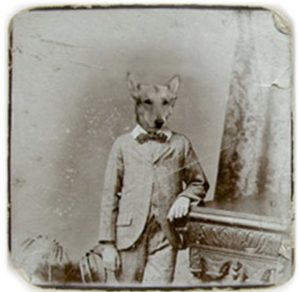 Ray Caesar
Ray Caesar
Ray Caesar is celebrated in the fine art world as the grandfather of digital art, a pioneer who has reshaped perceptions of entirely digital creations. His distinctive works draw inspiration from a range of sources, merging the past and present into surreal visual narratives.
Caesar’s art references the Dutch and Flemish masters like Vermeer and Jan van Eyck, the elegance of 18th-century painter Thomas Gainsborough, and the dreamlike decadence of French Rococo artists Watteau and Boucher. His love for Japanese culture is deeply personal, influenced by his Japanese wife Jane and her family, who introduced him to the works of renowned authors Yukio Mishima and Jun’ichiro Tanizaki.
Tanizaki’s themes, including the femme fatale, family dynamics, and the samurai ethic of balancing beauty, discipline, and honor, resonate strongly in Caesar’s work. This blend of Western art history and Japanese tradition creates a unique tension in his pieces—simultaneously timeless and modern.
Ray Caesar’s artworks are deeply autobiographical, capturing his life’s memories and moments. These visual diaries provoke both fascination and discomfort, leaving viewers yearning for more. For Caesar, creating art is akin to journaling—each piece provides a soothing release and a shared sense of inner calm.
As a trailblazer, Caesar has paved the way for the acceptance of digital art as fine art, demonstrating that entirely digital creations demand the same time, effort, and skill as traditional mediums. His meticulously crafted works, which take countless hours to complete, have earned international acclaim.
Caesar’s work has been exhibited extensively in solo shows across Europe, North America, and Asia, earning a place in the collections of esteemed institutions like the Bristol Museum. His art is also cherished by prominent collectors such as Riccardo Tisci of Givenchy, the Hearst Family (owners of Oprah Winfrey’s O Magazine and ESPN), and others.
In addition to exhibitions, Caesar has been featured in major publications, including The Times Magazine, Huffington Post, Vogue Italy, Vogue Japan, Hi-Fructose, and Juxtapoz, further cementing his influence in the contemporary art world.
View Full CVBorn 1958, London England
Current Residence, Toronto Canada
EDUCATION & EXPERIENCE
1977 to 1980 The Ontario College of Art
1980 to 1996 The Hospital for Sick Children, Department of Visual
Education, Medical Artist
1998 to 2001 GVFX Toronto, Senior Animator
PROFESSIONAL CREDITS
1999 – Primetime Emmy Nomination for Special Effects (Total Recall 2070)
1999 – Gemini Nomination for Special Effects
1999 – Monitor Award for Special Effects in a series
EXHIBITIONS
2024
February 2024 – Release: New Work of Ray Caesar, Gallery House Toronto Canada
September – SHOWStudio with Nick Knight (Group), London UK
November 15 – December 22 – Ray Caesar & Guest, Gallery House Toronto Canada
2023
March – James Freeman Gallery, UK, featuring Ray Caesar (double solo)
May 25 – end of June 2023 Solo Show – Authorized gallery TomuraLee Gallery, Tokyo Japan
June 14 – July 14 – Gallery House Stable Guest Artist | Summer Show featuring Ray Caesar, John Kissick, Grace Eunshin Kim, Debra Tate Sears, Jeffrey Chong Wang, Selena Wong & Guest Artist Rachel Speirs
September – Authorized gallery Kochxbos Gallery, Amsterdam Netherlands
September – Fukuoka Art Fair – Authorized gallery TomuraLee Gallery
October 4-8 – Art at the Hague – Authorized gallery Kochxbos Gallery (fair)
November 3 – December 22 – Double Solo Show – Gallery House, Toronto Canada (double solo)
2022
March 11-13, 2022 – TomuraLee Gallery, Art Fair Tokyo featuring Ray Caesar (Fair)
July, 2022 – Animazing Gallery, Venetian Resort Las Vegas USA featuring Ray Caesar (Group Show)
September 3-6 2022 – TomuraLee Gallery, KIIAF Korea Art Fair featuring Ray Caesar (Fair)
October 2022 – Kochxbos Gallery Amsterdam Art Fair featuring Ray Caesar (fair)
November 23 – December 16, 2022 “Subharmonic” New Works featuring Ray Caesar, George Jae Hyun Chu John Kissick, Grace Eunshin Kim, Debra Tate Sears, Jeffrey Chong Wang, Selena Wong
2021
“things you should know before I go” Gallery House – Toronto, Canada (solo)
Saatchi Gallery – London, UK (special exhibition with NFT and hologauze)
Hendricks & Ray Caesar at Saatchi Gallery, UK (NFT Launch)
Nov 19, 2021 – things that you should know before I go – Gallery House – Toronto, Canada (solo)
2020
LA Art Fair – with Copro Gallery – Los Angeles, USA (fair)
James Freeman Gallery– London, UK (solo)
Benjamin Eck Gallery – Munich, Germany (double solo)
2019
The Story So Far – Gallery House – Toronto, Canada (solo)
Metaphysical: Dark & Fantasy – Vanilla Gallery – Tokyo, Japan (group)
Another Country – James Freeman – London, UK (solo)
BLAB – Copro Gallery – Los Angeles, USA (group show)
Contemporary Istanbul Art Fair – with Benjamin Eck Gallery – Istanbul, Turkey (art fair)
Beautiful Broken Things – Gallery House – Toronto, Canada (solo)
2018
Moniker Art Fair, Damien Roman Gallery – New York, USA (fair)
Texas Art Fair, Damien Roman Gallery – New York, USA (fair)
James Freeman Gallery – London, UK (double solo show)
Lost In a Fragile Myth – Dorothy Circus Gallery – Rome, Italy (solo)
Scope Art Fair, Corey Helford Gallery – Miami, USA (fair)
Winter Show – Kochxbos Gallery – Amsterdam, Netherlands (group)
Kuntsai RAI Art Fair – Kochxbos Gallery – Amsterdam, Netherlands (fair)
Context Art Fair – Corey Helford Gallery – Miami, USA (fair)
2017
Nov. – PULP – Works on Paper – Gallery House Toronto, Canada (group)
Oct. – Dorothy Circus Gallery in London, England (Group)
July Damien Roman Fine Art (Group)
June -YES! Summer – Gallery House Toronto, Canada (group)
Feb. – Solo Exhibition, Gallery House Toronto Canada (solo)
Beinart Australia (group)
Jan. – London Art Fair with James Freeman Gallery (Fair)
2016
Nov – Kochxbos Gallery, Amsterdam Netherlands (solo)
Summer – Rare & Last Editions Exhibition, Gallery House (solo)
Aug – Corey Helford Gallery – 10th Year Anniversary (group)
July – James Freeman Gallery London, UK (group)
May – Virginia Museum of Contemporary Art (Museum Tour for 2yrs)
2015
January – Art Stage Singapore with Gallery House (fair)
Ongoing permanent exhibition at all AFA Gallery – New York, Las Vegas, New Orleans and France location.
November – Gallery House Solo Show, Toronto Canada (solo)
May – Belgium Castle with Kochxbos Gallery (group) with Erwin Olaf or Wim Delvoye, Jaime Hayon, Philippe-Starck, Jean Paul Gaultier, Yamamoto.
June – Affordable Art Fair in Hampstead, London England with Richard Goodall Gallery (fair)
July – Hamptons Art Market – Damien Roman Fine Art(fair)
July – Monaco Art Fair – Dorothy Circus Gallery(fair)
November – Solo Show, Gallery House Toronto Canada(solo)
Winter – Pandora’s Box with AFA Gallery New York (group)
2014
February –Two Header Show Dorothy Circus Gallery, Rome Italy
CIRCA Gallery, Culver City LA, US (solo)
Affordable Art Fair New York with Richard Goodall Gallery, US (fair)
Kunstai Art Fair with Kochxbos Gallery, Netherland (fair)
Affordable Art Fair at Hampstead, London UK (fair)
Art on the Edge, Vered Gallery Hamptons New York, US (group)
Hamptons Art Market, Vered Gallery Hamptons New York, US (fair)
Texas Art Market, Damien Roman Gallery Hamptons New York, US (fair)
AFA Gallery, New York US & Las Vegas (group)
Miami Art Fair, US (fair)
Evergrande – Gallery House, Toronto Canada (group)
Toronto International Art Fair, Toronto Canada (fair)
2013
Feb – Special Project with Spacejunk in Germany
Feb – RAW Art Fair Rotterdam with KochxBos Gallery (fair)
March – Affordable Art Fair with Richard Goodall Gallery Battersea, London (fair)
March 21- April 7, 2013 – The Pop Surrealism Show, Opera Gallery New York (group).
April – Gallery House Group Exhibition Featuring Catherine Howe and Ray Caesar, Anita Kunz, Joe Fenton, Toronto, Canada (Group)
April 4-7 – Affordable Art Fair with Richard Goodall Gallery New York US (fair)
April 5-27 – Above Ground, Hong Kong China (group)
April 5-27 – “Pretty Girls”, Above Second, Hong Kong, China (group)
April 13 – Corey Helford Gallery Retrospective Show, Culver City LA US (solo)
June 13-16 – Affordable Art Fair with Richard Goodall Gallery Hampstead, London (fair)
July 13-August 5 – Vered Gallery Group Show, East Hamptons New York (group)
July – Vered Gallery, Art Market Hamptons New York US (fair)
Oct 3 – “Truth, Light & Matter”, Annual Exhibition at Gallery House, Toronto Canada (group)
Dec – Corey Helford Gallery, Miami Art Fair US (fair) Opera Gallery, Miami Art Fair US (fair)
Marseille, France – Celebration of European Cultural Capital for 2013 (group)
Bordeaux, France – From Pixel to Numeric Painting (Spacejunk Gallery)(group)
Vichy, France – Celebrating pop surrealism exhibition (Spacejunk Gallery)(group)
2012
Stephen Webster Private Show, LA (solo)
January Group Show Musee de la Halle St Pierre, Paris France (group)
Group Show Musee de la Halle St Pierre, Paris France (group)
March 6-11, 2012 Scope New York, New York USA (fair)
March 10, 2012 Kochxbos Gallery, Amsterdam The Netherlands (group)
March – June 2012 Galerie du Jour, Paris France – TBD other locations traveling exhibit (group)
April 28– June 2012 Solo Show – Richard Goodall Gallery, Manchester England Solo Show (solo)
May, 2012 – Group Show Nyctalopes Exhibition, Paris France (group)
May 26-June 25, 2012 – Vered Gallery Group Exhibit, East Hampton New York USA (group) in Conjunction with Vered Auction w/Board of Trustee of MOMA
June 9, 2012 – Corey Helford Gallery Group Exhibit- “Motion: The Next Movement in Art”, Culver City LA (group)
June – September 2012 – Group Show – Spacejunk Center, France (group)
September 13-29, 2012 – Group Show – Palazzo Pisana with Dorothy Circus Gallery, Italy (group)
October 24 -28, 2012 Affordable Art Fair Battersea London with Richard Goodall Gallery, Manchester UK (fair)
October 26-29, 2012 Toronto International Art Fair, Toronto Canada (fair)
November 1-4, 2012 Affordable Art Fair Hampstead London with Richard Goodall Gallery, Manchester UK (fair)
November 29 2012 – Annual Exhibition “Miles to go before I sleep” – Gallery House w/ Gottfried Helnwein & Anita Kunz (group)
December 15, 2012 Kochxbos Gallery, Amsterdam The Netherlands (solo)
December 2012 “Crucifixion” Corey Helford Gallery, Culver City LA (group)
December 4-9, 2012 Scope Miami, Miami Florida USA (fair)
2011
Jonathon Levine Gallery, Solo Show New York, NY (solo)
Corey Helford Gallery, “In the Nursery”, LA California
Frans Vanhove Gallery at Affordable Art Fair Brussels, Belgium
Corey Helford Gallery, Solo Show, LA California (solo)
2010
Richard Goodall Gallery
Bristol Museum, Bristol England
Corey Helford Gallery, LA California
Affordable Art Fair, London England
NewcastleGateshead Art Fair, Newcastle, England
2009
Galerie Magda Danysz. Paris, France
Richard Goodall Gallery. Manchester UK
Mondo Bizzaro Gallery. Rome, Italy (solo)
2008
In The Garden of Moonlight. Jonathan LeVine Gallery. New York, NY
In The Land of Retinal Delights: The Juxtapoz Factor. Laguna Art Museum. Laguna, CA
The Tales We Tell Exhibition Lonsdale Gallery. Toronto, Ontario, Canada.
2007
“We’ll Make a Lover of You” At The ArtCenter, South Florida
Ipso Facto Richard Goodall Gallery Manchester England (solo)
Rome Is Burning/The New School. Foster Gallery University of Wisconsin.
2006
Sweet Victory Jonathan Levine Gallery New York (solo)
Katalogue Book Opening at The Gibson Jessop Gallery Toronto
Nostalgia , Magda Danyz Gallery, Paris
Oxop Juxtapoz show, Minneapolis
Friendly Fire, Berman Turner Projects, Santa Monica
2005
Pulp, Lonsdale Gallery in Toronto
Secret Doors and Hidden Rooms, Jonathan Levine Gallery in New York (solo)
Upon Further Review, Rogue Buddha Gallery Minneapolis
Idols of Perversity, Bellwether Gallery New York
London Art Fair, Richard Goodall Gallery, London England
Katalogue Book Opening at The Trafalgar Hotel London England
The World of Ray Caesar Kochbos Gallery Amsterdam Holland
2004
Now we are Six, Roq La Rue in Seattle ( group )
Age of Aquarius, Copro Nason in Los Angeles ( group )
Ray Caesar and Amy Hill, two person show at Roq La Rue in Seattle
Benefit for the Memphis six, Phoenix Arizona ( group benefit )
Misdirection 2004, Lineage Gallery in Burlington Vermont ( group )
Ghost Town, Tinmanalley in Philadelphia ( group )
Parallel Universe, Art Basel Florida ( group )
2003
International Digital Art Awards, Melbourne Australia ( group )
Big Men in Small Cars, Tinmanalley in Philadelphia ( group )
A Complex Conspiracy, 2 person show at Tinmanalley in Philadelphia
PRESS
PUBLISHED ARTICLES
Juxtapoz Jul/Aug 2004 #51 US
WeAr Fashion workbook Nov 2005
Gothic Beauty Jan 2006
IDN Magazine 2005
Creator Spain winter 2005
Pacha Madrid Fashion Magazine Nov 2005
NASH Ukrainian Culture Pub. cover and article 2004 Ukraine
EFX Art and Design issues #39 and #40 2004 Sweden
3D world Issue #47 January 2004 US
Toronto Life February 2005
Expose 2 – Ballistic Publishing 2004 US
Computer Graphics World July 2004 US
Computer Arts issue #59 June 2004 UK
Digital Media World 2004 Australia
New CG China cover of issue #8 2004 China
Glamour Magazine, Italian edition, article 2004 Italy
Lazama Argentina 2005
CAD Designer, Cover and article issue #200 2004 Taiwan
Denver Syntax, article 2004 US
Nippon Vogue Jan 2006
High Fructose 2007
Juxtapoz 2007
Pol Oxygen 2008
JOI 2008
Hairs How Russia 2008
Advanced Photoshop 2008
Maxim Italy 2008
Juxtapoz 2008
Urban Underground Scene publication Japan 2008
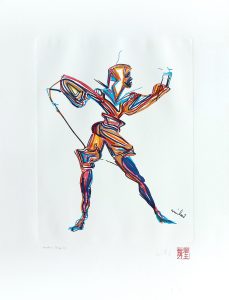
Miles Davis
Internationally renowned as a groundbreaking jazz musician, Miles Davis (1926–1991) was also a visual artist whose works in drawing, painting, and printmaking reflect the same spirit of experimentation and expression that defined his music. Beginning in the 1980s, Davis began working seriously in visual media, producing hundreds of works that range from surreal figurative sketches to vivid mixed-media compositions. His visual practice was deeply personal, improvisational, and intuitive, mirroring the structure and spontaneity of jazz.
Davis’ artworks have been exhibited internationally and are held in private and institutional collections. His print editions and original works have become increasingly sought after by collectors interested in the intersection of visual and sonic culture.
View Full CVBORN
Born 1926, Illinois, USA
Died 1991, California, USA
EDUCATION & EXPERIENCE
Juilliard School (no degree)
PROFESSIONAL CREDITS
Musician, Bandleader, Composer, Artist
SELECTED EXHIBITIONS
Selected Solo Exhibitions
2023
Miles Davis: The Visual Voice, Gallery House, Toronto, Canada
Miles Davis: Sound into Sight, Martin Lawrence Galleries, New York, NY
2010
Miles Davis: A Retrospective, Montreal Museum of Fine Arts, Montreal, QC
2002
Miles Davis: The Art of Cool, Chicago Fine Arts Exchange, Chicago, IL
1991 (Posthumous Debut Exhibition)
Miles Davis: Paintings and Drawings, Gallery 319, Los Angeles, CA
Selected Group Exhibitions
2024
Legacy in Motion: Artists Who Transcended Disciplines, Urban Art Space, Berlin, Germany
2020
The Jazz Aesthetic, Contemporary Arts Museum, Houston, TX
2015
Icons in Art, Blue Rain Gallery, Santa Fe, NM
COLLECTIONS
The Miles Davis Estate Collection
Private Collections – New York, Paris, Tokyo, Toronto
Trumpet Fine Arts Archive
Jazz Museum in Harlem (permanent display, select works)
Poster Museum of Visual Music, Los Angeles
Publications & Catalogs
Miles Davis: The Art of Cool, Abrams Books, 2003
Miles Davis: Visual Rhythms, Gallery House Press, 2023
Sketches of Miles, exhibition catalogue, Martin Lawrence Galleries, 2021
REPRESENTATIONS
Gallery House (Canada)
Martin Lawrence Galleries (United States)
Davis Estate Archives
Harold Feist
Harold Feist was born in Texas and studied painting and Art History at the University of Illinois and went on to become a Hoffberger Fellow at the Maryland Institute College of Art, where he had hopes of apprenticing under the abstract painter Clyfford Still. However, after a year, a chance trip to Calgary with a friend landed him a teaching position at the Alberta College of Art, and with Still having become increasingly isolated in the latter part of his career, Feist immediately accepted. It was 1968, and by that time the Canadian prairies had already undergone a flourishing in abstract painting. Two decades earlier, Regina, Saskatoon, and Edmonton had become the site of workshops, galleries, and university courses taught by well-known American abstract painters who garnered the praise of New York art critic Clement Greenberg. Unintentionally, Feist came to share a geography with these painters and spent the length of his career in Canada with numerous solo and group exhibitions across North America. He had his first solo exhibition at the Glenbow Museum in 1970 and was included in an important group exhibition at The Edmonton Art Gallery entitled Prairie ’74, which focussed on an emerging set of promising abstract painters in western Canada.
View Full CVSolo Exhibitions:
2021 “Hue & Flow”, Gallery House, Toronto, Canada (solo)
2018 “Surface & Colours”, Gallery House, Toronto, Canada (solo)
2014 Scott Gallery, Edmonton
2011 Moore Gallery, Toronto
2007 ‘Works on Paper + Canvas, from the Collection of the Art Gallery of Algoma in Sault Ste. Marie, ON’, Owens Art Gallery, Mt. Allison Univ., Sackville, NB
1981-2006 Gallery One, Toronto
1990 Galerie Elca London, Montreal, Buschlen-Mowatt Fine Art, Vancouver, Kathleen Laverty Gallery, Edmonton, Virginia Christopher Gallery, Calgary
1988 Galerie Elca London, Montreal, Eva Cohon Galleries, Chicago and Highland Park, Illinois
1988-90 “Harold Feist: Genesis of an Image”, Agnes Etherington Art Centre, Queens University, Kingston, Ontario, touring.
1986 Galerie Elca London, Montreal
1984 Buschlen-Mowatt Fine Art, Vancouver
1983 Galerie Elca London, Montreal
1982 Virginia Christopher Gallery, Calgary, Martin Gerard Gallery, Edmonton
1981 Martin Gerard Gallery, Edmonton
1980 Harcus-Krakow Gallery, Boston
1975 Hart House, University of Toronto, University of Saskatchewan Gallery, Saskatoon
1974 Norman Mackenzie Art Gallery, Regina
1971 A.C.A. Gallery, Calgary, Alberta
1970 Glenbow Gallery, Calgary
Group Exhibitions:
2017 “UNTITLED 2011: Stanley Boxer, Jack Bush, Friedel Dzubas, Harold Feist, Marcelle Ferron, Paul Fournier, Jay Isaac, Rita Letendre, Ray Mead, Kim Neudorf, Jules Olitski, Sandy Plotnikoff, Larry Poon”, Paul Petro Gallery, Toronto
2007 “Harold Feist: Works on Paper and Canvas”, Art Gallery of Algoma, Sault Ste. Marie, Ontario
2004 “Douglas Haynes and Harold Feist”, Gallery One, Toronto
2001 “Clement Greenberg: A Critic’s Collection”, Portland Art Museum, Portland, Oregon
2001 “Triangle Workshop Artists at OCAD”, Ontario College of Art, Toronto
1999-2000 “Abstraction: A Curator’s Choice”, Art Gallery of Algoma, Sault Ste. Marie, Ontario
1998 “Abstraction Now”, Selected by Karen Wilkin”-, place: Gallery One, Toronto, Ontario, Canada, Featuring paintings by: Ann Clarke, Michele Drouin, Katja Jacobs, Harold Feist, Joseph Drapell, Douglas Haynes, Bill Kort, Bobby Tamo, Alice Teichert, and Carol Sutton. Lecture given by Karen Wilkin
1992 Doug Haynes, Harold Feist, Phill Mann, Kathleen Laverty Gallery, Edmonton AB
1988 “Curator’s Choice: A Ten Year Retrospective — Feist, Drapell, Sutton”, Buschlen-Mowatt Gallery, Vancouver
1987 “V.I.P…A Selection of Very Important Painters celebrating their work of the 80’s”, Gallery One, Toronto, Ontario, Canada, November 29 to December 17, (paintings by: Stanley Boxer, Joseph Drapell, Fridel Dzubas, Sam Francis, Helen Frankenthaler, Doug Haynes, David. Hockney, Katja Jacobs, Robert Motherwell, Kenneth Noland, Jules Olitski, Larry Poons, Frank Stella, and Carol Sutton)
1986 “Toronto 3”, Eva Cohon Gallery, Highland Park, Illinois
1985 “Abstraction X Four”, Canada House, Canadian High Commission, London – toured Europe
1985 “The MFA (Boston) Hines Contemporary Art Collection”, University Place at Harvard Square, Boston, Massachusetts, U.S.A.
1984 “15 Canadians from the Art Bank Collection”, National Arts Centre, Ottawa
1983 Gallery One, Toronto
1982 “Selections from the Westburne Collection”, Edmonton Art Gallery
1980 “The New Generation: A Curator’s Choice by Kenworth Moffett”, Premiere- The Andre Emmerich Gallery, New York, New York, September 4 to 27 and then toured Europe in 1981 to; American Cultural Centre, Paris, France, Amerika House, Berlin, West Germany, Arzore Cooperative, Porto, Portugal, Sociedade Nacional de Belas Artes, Lisbon, Portugal
1980 Gallery One, Toronto
1979 “25 Canadians”, Birmingham Arts Festival, Alabama
1978 “Certain Traditions: Recent British and Canadian Art”, Toured Canada & United Kingdom: Mostyn Gallery, Lhanducho, Wales, City Art Gallery, Aberdeen, Scotland, Herbert Art Gallery, Coventry, England, Commonwealth Institute, London, England
1977 Waddington Galleries, Montreal
1977, 78 Waddington Galleries, Toronto
1977 “Abstract Art Now”, Edmonton Art Gallery
1975-77 “Painting in the West: Emma Lake and After”, National Gallery of Canada (toured Canada)
1975-78 “Major Saskatchewan Artists”, Mendel Art Gallery, Saskatoon (toured)
1975 “Abstract Art On Paper”, Edmonton Art Gallery (toured)
1975 “Western Canadian Painting”, Edmonton Art Gallery
1974-76 “The Canadian Canvas”, Time/Life (toured Canada)
1974 “Prairies ’74”, Edmonton Art Gallery
1974 “Western Canadian Painting”, the Bronfman Centre, Montreal
1974 Espace 5 Gallery, Montreal
1974/75 “Canada X Ten”, Edmonton Art Gallery (toured Canada)
1973 “Art Bank Exhibition”, Canadian Cultural Centre, Paris, France
1973 Gallerie de l’Art, Paris, France
1973 “Alberta ’73”, Edmonton Art Gallery (award).
1973 “Elliott and Feist: Paintings On Paper”, Peter Whyte Gallery, Banff, Alberta
1973 “Elliott, Feist, and Sen”, the Pyrch Building, Edmonton
1972-74 “Survey of Canadian Art Now”, Burnaby Art Gallery, Burnaby, B.C.
1972 “12th Calgary Graphics Exhibition”, A.C.A. Gallery, Calgary
1971 to 73 “6th Burnaby Print Show”, Burnaby Art Gallery, B.C.
1971 “West ’71”, Edmonton Art Gallery (Award, toured)
1971 “Canadian Print and Drawing Show”, Canadian Society of Graphic Arts, Toronto
1971 “11th Calgary Graphics Exhibition”, A.C.A. Gallery, Calgary
1971 “Environment ’71”, Jubilee Auditorium, Calgary
1970 “All-Alberta Exhibition”, Edmonton Art Gallery
1970 4-Man Show, Allied Arts Centre, Calgary
1969 “Environment ’69”, Jubilee Auditorium, Calgary
1968 Maryland Regional Exhibition, Baltimore Museum of Art
1966 “Central Illinois Open Exhibition”, Champaign, Illinois, (Award)
Publications:
Roald Nasgaard, “Abstract Painting in Canada”, Douglas and McIntyre, 2008
The New Generation: A Curator’s Choice, by Kenworth Moffett, 1980
Karen Wilkin, Bruce Guenther:editor, Greenberg Collection: A Critics Collection, Portland Art Museum, 2001
John Armstrong, “Harold Feist”, CanadianArt, Winter 2006
Gottfried Helnwein
Gottfried Helnwein who’s concerned primarily with psychological and sociological anxiety, historical issues and political topics. As a result of this, his work is often considered provocative and controversial. Reoccurring focuses include the Child unlike portrayed in usual innocent carefree manners are vividly depicted as physically and emotionally harmed. As well as self-portraits and the Holocaust. Also reoccurring are cartoons twisted with a monstrous vision. Other works of Helnwein includes portraits of the Rolling Stone, John F Kennedy for Time magazine, Andy Warhol, Muhammed Ali and works of art in the ‘History’ album of Michael Jackson.
View Full CVBORN
1948, Vienna Austria
FINE ART MUSEUM EXHIBITIONS (SELECT)
2017
April – One Man Show – Werner Berg Museum Bleiburg(Solo)
YES! Summer – Gallery House – Toronto, Canada (group)
2016
Pan Palazzo Delle Arti Di Napoli(Retrospective)
Friedman Benda Gallery(Solo)
2015
Feb – April – Warhol to Richter, Albertina Museum Featuring Warhol, Richter, Baselitz, Polke, Helnwein, Gertsch, Fontana, Lassnig(Group)
Feb 2015 – May 10, 2015 Death & Beauty – Kumu Art Museum Tallinn Estonia
May – Volksbühne Berlin(Retrospective)
Art Miami New Yok Pier 94 with Modernism Gallery San Francisco(Fair)
Nov 2015-Jan 20, 2016 – Museum of Modern Art Belgrade(Solo)
Oct 2015 – Feb 21, 2016 Rabenmutter – Zwischen Kraft Und Krise – Lentos Art Museum, Linz
2014
Daelim Contemporary Museum Seoul, Korea (Solo)
2013
Friedman Benda, New York (Solo)
Retrospective at Albertina Museum Vienna
Oct – “Truth, Light & Matter” Annual Exhibition, Gallery House Toronto Canada (Group)
2012
Solo Show Museo Nacional de San Carlos, Mexico City Solo Show at Hilario Galguera, Mexico City Annual Show “Miles to go before I sleep” (Group) Gallery House, Toronto Canada
2011
“Pop’d from the Panel” Exhibit at the Charles M. Schulz Museum Santa Rosa California (2011) San Francisco Fine Arts Museum, (130,000 visitors)
2009
Crocker Art Museum, Sacramento
2007
“Disasters of War” series of paintings in memory of Francisco de Goya II at Modernism Gallery in San Francisco
2006
Solo Show Lentos Museum, Linz -Austria (record museum visitor & PR for museum)
2005
“Beautiful Children” Solo show at Ludwig Museum Scholoss Oberhausen & Wilhelm Busch Museum, Hannover “Soul” Exhibition at Museum of Modern Art Ostend
2003
“Ninth November Night” Museum of Tolerance, Los Angeles
2002
“Downtown” The American paintings II Solo Show at Modernism Gallery in San Francisco “Portrait Obscured” San Jose Institute of Contemporary Art
1999
“apocalypse” Gothic Dominican Church in Krems, Austria (Solo)
1998
Waino Aaltonen Museum of Art, Turku Finaland
1997
Retrospective at State Russian Museum, St Petersburg
1996
Fine Arts Museum, Otaru Japan “Neunter November Nacht”
1995
Group Exhibition for the Ludwig Collection from antiquities to the present day at Ludwig Museum Schloss Oberhausen Trying to Mourne” “Faces”, Houston Centre for Photography (Solo) Solo Show at Daelim Contemporary Museum Seoul, Korea
GALLERY & CITY EXHIBITIONS (SELECT)
(Note Exhibits extensive dates back to 1992 and prior)
2012
Friedman Benda, New York (Solo) Teatro Elfo Puccini Group Exhibit, Mlano(Solo)
2011
Art Basel Week Fair “Midnight Mickey” Helnwein Sotheby’s New York “Gottfried Helnwein and the Dreaming Child “at Carmel Art and Film Festival Group Exhibit with Joseph Beuys, Chuck Close, Andy Warhol and others at DZ Bank Kunstsammlung Double Installation “48 Portraits” Gottfried Helnwein & Gerhard Richter at Galerie Rudolfium, Prague “The Last Child” installation throughout the City of Waterford, Ireland
2003
The University of Arizona Museum of Art “ (2003)
2002
Lead White Gallery, Dublin “VII” Group Exhibit Robert Sandelson Gallery, London (Solo)
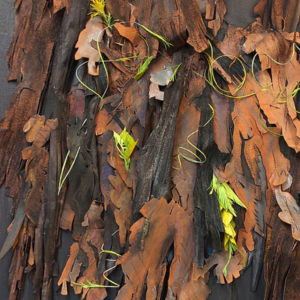
Susan Farquhar
Susan Farquhar is a multidisciplinary artist who explores the intersections of memory, environment, and transformation. Drawing inspiration from natural landscapes, urban environments, and personal histories, Farquhar creates richly layered pieces that invite reflection on resilience, impermanence, and renewal.
Working across mixed media and painting, Farquhar’s practice is marked by an intuitive layering of textures, colours, and found materials. Her work often reflects a deep sensitivity to ecosystems, the impacts of human existence on nature, and the cycles of growth and decay—capturing fleeting moments of beauty within broader narratives of change.
Farquhar’s work has been exhibited nationwide in galleries and public spaces, earning recognition for its emotional depth and technical innovation. She studied at the University of Guelph and York University and trained in lithography under a master printer at Open Studio in Toronto. Farquhar went on to work at Novak Graphics, a publisher of international and local artists, until 1989. With her partner Robert, she later co-founded Atelier GF, a professional fine art printing studio that operated until 2013. There, they produced prints for renowned artists such as John Chamberlain, Malcolm Morley, Anne Meredith Barry, John Hartman, and Alice Teichert, as well as for the estates of John Lennon and Miles Davis.
She has participated in numerous group and solo exhibitions, with works in private and corporate collections that include Ernst and Young, McKinley & Company, Price Waterhouse, Petro Canada, Royal Bank, Hilton Hotel, IBM and many others. Farquhar was awarded the Artist in Residence at the Women’s Art Association of Canada for 2018–2019, where she conducted printmaking workshops, organized gallery visits, curated a group print exhibition, and held a solo show.
Rooted in a commitment to continuous exploration, Farquhar approaches each project as a conversation between material, place, and memory. Through her evolving practice, she invites viewers to engage with the complexity and quiet power of the world around them.
Susan Farquhar currently lives and works in Toronto, Canada, where she continues to expand her artistic practice at Gallery House.
View Full CVBORN
Born 1954, North Bay, Ontario, Canada
Current Residence, Toronto, Canada
PROFESSIONAL PRINTMAKING
1979 to 1982 – Open Studio: training with Master Printer in Lithography, taught lithography workshops,
printing assistant in lithography, studio maintenance
1983 to 1990 – Novak Graphics: Lithography Director, lithography studio set up, work with artists and produce lithographic editions, assist with etching printing projects.
1991 to 2013 – Atelier GF: establish printmaking studio with partner Robert Game providing etching, relief and silkscreen to artists
Abbreviated List of Artists with whom Susan has had the privilege of working
Stanley Boxer, John Chamberlain, Miles Davis Estate, Anthony Hopkins,
John Lennon prints published through Bag One Arts, director Yoko Ono
Dorothea Rockburne, Kenojuak Ashevak, Walter Bachinski, Anne Meredith Barry, Chris Broadhurst,
Louis de Niverville, Pat Fairhead, Brian Kelley, Barry Oretsky, Douglas Stone
ARTIST RESIDENCIES
1985 – St Michaels Workshop: one month free use of printmaking studio, contribute to print collection, make artist presentation to membership
2018 to 2019 – Artist in Residence: Women’s Art Association of Canada, ten month personal studio, produce solo show, provide workshops, gallery visits, plan and manage membership printmaking show
PUBLIC COLLECTIONS
Canada Council Art Bank The Station Gallery Carleton University Art Gallery University of Toronto Art Centre Collection
CORPORATE COLLECTIONS
AGF Management Ltd.
Bank of Montreal
Manufacturers Hanover Trust Co.
Bell Canada
Marion Merrell Dow
Canada Development Corporation
McKinley & Company
Canada Pacific Limited
NOVA, Alberta
Council Life Incorporated
Pan American Petroleum
Citibank Canada
Peterson, Howell and Heather
Clarkson Gordan
Price Waterhouse
Coopers Lybrand
Petro Canada
CIL Corporation
Royal Bank
Daon Development Corporation
Smiley, Allingham and Brown
Deloitte and Touche Corporation
Selkirk Communications
Drug Trading
SMW Advertising
East York Board of Education, Toronto
Sorema Canada
Esso Resources Canada
TBL Corporation
Frank Russell Canada
Thorsteinssons
FMC Chicago
Thorne Ridell
Hilton Hotel
Toronto Dominion Bank
IBM Canada
Toronto Stock Exchange
L’Hotel Collection
Westinghouse
Ernst and Young
EXHIBITIONS
2024
TOUCH 2 (a way of knowing) Group Exhibit, Propeller Art Gallery, Toronto
Salon 18, Propeller Art Gallery, Toronto
2023
Unframed, Juried Group Exhibit, Propeller Art Gallery, Toronto
Pushing Boundaries, Dignam Gallery, Women’s Art Association of Canada, Toronto
Totally Awesome ‘80’s Show, Station Gallery, Whitby
Secret Postcard Society Show, Women’s Art Association of Canada, Toronto
Salon 17, Propeller Art Gallery, Toronto
World of Threads Festival 2023, Queen Elizabeth Park Community & Cultural Centre, Oakville
2022
Old Growth, Propeller Art Gallery, Toronto
2021
Are We Epicormic ? Solo Exhibit Ruth Upjohn Gallery, Women’s Art Association of Canada, Toronto
Touch: A Way of Knowing eleven object oriented artists, Propeller Art Gallery, Toronto
Refractive Moments: Exploring Light and Life, Women’s Art Association of Canada, Toronto
Altered Images At Hand, Propeller Art Gallery, Toronto
Salon 15, Propeller Art Gallery, Toronto
2020
Creative Spirit Membership Exhibit, Women’s Art Association of Canada, Toronto
Where is Wild Continues, Propeller Art Gallery, Toronto
2019
Where is Wild, Artist in Residence Solo Exhibit,
Women’s Art Association of Canada, Toronto
WAAC Print Works 2019, Curator of Members Group Exhibit,
Women’s Art Association of Canada, Toronto
The Promise of Sekishu Washi, Propeller Gallery, Toronto
Print 2019, John B. Aird Gallery, Toronto
2017
Wild Tapestry, David Kaye Gallery, Toronto
2016
Northern Mnemonics, Sunderland Hall Gallery, First Unitarian Congregation of Toronto Image Landings, Ferneyhough Contemporary Gallery, North Bay
2015
The Artist Project Contemporary Art Fair, Exhibition Place, Toronto Landmade Imagining, David Kaye Gallery, Toronto Landmade, Campus Gallery, Georgian College, Barrie
SDVA Collaborative Print Program, Visiting Artist at Georgian College, Barrie
2014
The Print Makers, Ferneyhough Contemporary Gallery, North Bay The Artist Project Contemporary Art Fair, Exhibition Place, Toronto.
2013
Northern Currents, Ferneyhough Contemporary Gallery, North Bay The Wiki Show, Station Gallery, Whitby The Print Show, 10th Annual Juried Print Exhibition, John B. Aird Gallery, Toronto 2012
Northern Traces, David Kaye Gallery, Toronto The Big Chill, Neilson Park Creative Centre, Etobicoke Drawing
2012
John B. Aird Gallery, Toronto Aqua: The World of Water, Ferneyhough Contemporary Gallery, North Bay The 9th Annual PRINT SHOW, John B. Aird Gallery, Toronto
2011
Mistletoe Magic, John B. Aird Gallery, Toronto The 8th Annual Print Show, John B. Aird Gallery, Toronto Then & Now: Blackwood, Farquhar, Livey, Nind, Rettig, Smylie, Station Gallery, Whitby
2010
New Prints and Drawings, Ferneyhough Contemporary Gallery, North Bay
2009
Painters of the Gallery, David Kaye Gallery, Toronto Washi Revisited: A year later, David Kaye Gallery, Toronto Boreal Scratch, Open Studio, George Gilmour Members’ Gallery, Toronto Pattern In Contemporary Art, Joan Ferneyhough Gallery, North Bay 21st Century In Abstraction, Joan Ferneyhough Gallery, North Bay
2008
Boreal Echo, David Kaye Gallery, Toronto Surfaces, Ontario Society of Artists 134th Open Juried Exhibition, J.B.Aird Gallery, Toronto reVision, John B. Aird Gallery, Toronto
2007
Northern Drawing, Joan Ferneyhough Gallery, North Bay 6 Printmakers: A Showcase, Muskoka Place Gallery, Port Carling
2006
10th Anniversary Exhibition, Joan Ferneyhough Gallery
The Print Show, John B. Aird Gallery, Toronto
Kaleidoscope, Station Gallery, Whitby
2005
Kipawa, Joan Ferneyhough Gallery, North Bay Drawing on Landscape, Muskoka Place Gallery, Port Carling The Little Prints Exhibition, John B. Aird Gallery, Toronto Drawing for Art, The Station Gallery, Whitby 100 Prints Open Studio, Toronto
2004
Drawing for Art, The Station Gallery, Whitby
100 Prints Open Studio
2003
Artist Proof Sale Open Studio
2000
Drawing for Art, The Station Gallery, Whitby
1999
Drawing for Art, The Station Gallery, Whitby
1998
Bizou Café, Toronto Drawing for Art, The Station Gallery, Whitby W.K.P. Kennedy Art Auction, North Bay Tom Thomson Memorial Art Gallery, Owen Sound
1997
St.Michael’s Printshop 25th Anniversary Exhibition, St. John’s, NF 100 Prints, Open Studio Drawing for Art, The Station Gallery, Whitby
1995
Drawing for Art, The Station Gallery, Whitby
1991
Day by Day On Paper, The McGill Club Gallery, Toronto 100 Prints, Open Studio, Toronto
1990
Rendezvous/Meeting, Alliance Francaise, Toronto 100 Prints, Open Studio, Toronto 1990
W.K.P. Kennedy Gallery Art Auction, North Bay
1989
100 Prints, Open Studio, Toronto
1988
100 Prints, Open Studio, Toronto The Elmwood Club, Toronto Landscape Show, Open Studio, Toronto 1987
100 Prints, Open Studio, St. Lawrence Great Hall, Toronto
1986
The Elmwood Club, Solo Exhibit, Toronto
1985
Action Impression, Print Tour of Ontario and Quebec
1983
Printmakers Invitational, Latcham Art Centre, Stouffville A Premiere: Prints and Drawings, O’Keefe Centre, Toronto Merton Gallery, Toronto, Group Print Show Works on Paper, London Regional Art Gallery, ON
1982
Open Studio Printworks, Art Gallery of Hamilton, ON Open Studio, Open House, Toronto
1981
Works on Paper, London Regional Art Gallery, ON First Purchase, The Art Gallery, Harbourfront, Toronto The Franco-American-Canadian Conference, University of Main Artworks, Ward Gallery, Sibley’s Rochester, NY
1980
Open Studio 10th Anniversary Exhibition, Harbourfront Community Gallery, Toronto 2nd Biennale of Prints and Drawings, Print & Drawing Council of Canada, Edmonton
Robert Game
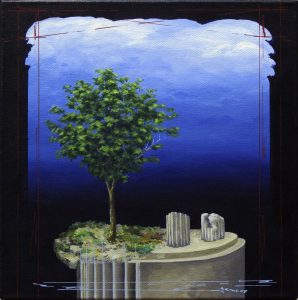
Robert Game is a Toronto-based artist whose work explores the complex intersections of memory, urban tension, and emotional resilience. Working primarily in mixed media, painting, and found materials, Game constructs layered visual narratives that reflect the fractured beauty of city life and the quiet moments of human vulnerability within it.
Influenced by architectural forms and the texture of lived experience, his compositions balance structure and spontaneity—blending gestural abstraction with recurring motifs from the urban environment. His process is intuitive yet deliberate, allowing materials to guide meaning as much as form.
Robert studied fine art and trained as a master printer, later working at Novak Graphics, a respected publisher of international and Canadian artists, until 1989. With his partner Susan, he went on to co-found Atelier GF, a professional fine art printing studio that operated until 2013. There, they produced editions for renowned artists including John Chamberlain, Malcolm Morley, Anne Meredith Barry, John Hartman, and Alice Teichert, as well as for the estates of John Lennon and Miles Davis.
Game’s work has been exhibited across Canada and internationally in the United States, Germany, and the United Kingdom. His pieces are held in private collections in Toronto, New York, and Berlin. As his exhibition history continues to expand, Game remains committed to exploring how identity, place, climate change and memory intersect and evolve through visual form.
BORN
1944 Alberta, Canada
Current Residence, Toronto Canada
EDUCATION
1967 BFA, University of Alberta
PROFESSIONAL EXPERIENCE
Studio and Administrative Experience
1968/82 Open Studio: artist renter for 12 years, teaching, custom printing, served on OS Board
1970 Arindale College print workshop
Central Technical School – printmaking
1977/78 Art Gallery of Ontario – set up Lithography in gallery school, teaching
Classes at OCA – painting classes
1979/80 Three Schools, teaching printmaking
Artist Workshop – published lithograph edition
1981 Cambrian College print workshop
1980/84 Toronto School of Art, printmaking
Served on Visual Arts Ontario Board
1981/82 Praga Printmaking, set up studio for etching/custom printing & developed line of etching inks.
1983/90 Novak Graphics: Master Printer, etching, Studio Manager 1986 to 1990
1984 Presse Papier, Trois-Rivieres, PQ, Canada Council print workshop
1984/87 Print and Drawing Council of Canada – director
Visual Arts Ontario, served on board of directors
1986/87 Action Impression – Juried touring print show organized with Quebec Council
1988 St. Michael’s Print Shop, NFLD, Canada Council print workshop
1990 Established Atelier GF print studio with Susan Farquhar – until 2013
2010/11 Centennial College Fine Art, Program Advisory Committee
SELECTED ONE & TWO PERSON EXHIBITIONS
2017 Joan Ferneyhough Gallery, North Bay
2009 Joan Ferneyhough Gallery, North Bay 2007 Joan Ferneyhough Gallery, North Bay
1989 Alliance Francaise de Toronto
1984 Art Gallery of Hamilton, Hamilton 1979 Gallery Moos, Calgary, Alberta 1977 Le Cadre Gallery, Toronto 1974 Fleet Galleries, Winnipeg 1969 Pollock’s Phase II Gallery, Toronto
SELECTED INTERNATIONAL EXHIBITIONS
1993 Premix Internazonale Per L’Incisione, Biella, Italia Australian Tour, Contemporary Canadian Prints
1992 Ljubljana Biennale, Yugoslavia
International Triennial of Graphic Arts ’91, Kracow, Poland
1981 University of Maine, OS Prints, Maine
Artworks Gallery, Rochester, NY
1979 Albright – Knox Gallery, Buffalo, NY, OS Prints
Japanese Tour of Alberta Art Foundation Collection, Japan 2719 Gallery, Fourth Annual Paper Show, Dallas, Texas Abrams Gallery, New Images from Canada,
Rochester, NY
1977 2719 Gallery, Dallas, Texas Canadian Cultural Centre, OS Graphics, Paris, France SELECTED GROUP EXHBITIONS
2016 Liss Gallery, Toronto, September
Liss Gallery, Toronto, June ¬
2015 Artist Project fair, Toronto, Better Living Centre
2014 Maclaren Art Centre, Barrie, ON, Poetry Imagined
Yellow House Gallery, Toronto
Joan Ferneyhough Gallery “Printmakers”
TAP Art Fair, Toronto
2013 TAP Art Fair, Toronto, 2012 Station Gallery, Whitby, Past and Present 2010 Joan Ferneyhough Gallery,”Print & Drawings”, North Bay David Kaye Gallery, Painters of the Gallery, Toronto 2008 April, John B Aird Gallery, “ReVision”, Toronto 2007 Joan Ferneyhough Gallery, North Bay John B. Aird Gallery, The 4th Annual Juried Print Show, Toronto SpeakEasy Presentation, Gladstone Hotel, Toronto Muskoka Place Gallery, group print show 2006 John B. Aird Gallery, The 3rd Annual Juried Print Show, Toronto AGO “In Your Face”, Toronto 2005 AGF Group Presentation
Engine Gallery, Toronto John B. Aird Gallery, Juried Prints, Toronto Whitby Arts Inc., The Station Gallery “Drawing for Art” Open Studio “100 Prints”
2004 AGF Group Presentation
Whitby Arts Inc., The Station Gallery “Drawing for Art” Open Studio “100 Prints”
2003 AGF Group Presentation
Open Studio Artist Proof Sale
2000 Whitby Arts Inc., The Station Gallery “Drawing for Ar 1999 Whitby Arts Inc., The Station Gallery “Drawing for Art” 1998 Tom Thomson Memorial Art Gallery, Owen Sound
Whitby Arts Inc., The Station Gallery “Drawing for Art” W.K.P. Kennedy Gallery Auction
1995 Whitby Arts Inc., The Station Gallery “Drawing for Art”
1994 Open Studio “100 Prints”, Toronto
Whitby Arts Inc.,The Station Gallery “Drawing for Art”
St. Michael’s Printshop, St. John’s, NF
Art Gallery of Memorial University, NF 1992 Press Papier Gallerie, Trois – Rivieres, Quebec 1985/86 Action Impression, Touring Juried Exhibition, Ontario & Quebec
1984 Contemporary Canadian Prints, Tour of Australia
1983 Latcham Gallery, Printmakers Invitational, Stouffville
Merton Gallery, Juried Print Exhibition Toronto
Printmakers ’82, Art Gallery of Ontario, Rental Gallery, Toronto
Mac Master University Art Gallery, Hamilton 1982 West End Gallery, Edmonton, Alberta
Abrams Gallery, New Images from Canada, Rochester, NY
1981 First Purchase, Art Gallery at Harbourfront, Toronto
Open Studio, University of Maine
Art Gallery at Harbourfront, Toronto
1980 Market Gallery, Toronto
Art Gallery at Harbourfront, First Purchase, Toronto
Continental Bank of Canada, OS Prints
A.C.T. Invitational Print Exhibition, Toronto
1979 Open Studio, Albright Knox Art Gallery, Buffalo, New York
Alberta Art Foundation Collection, Tour of Japan
2719 Gallery, Dallas, Texas
Gallery Moos, Toronto
Pressure ’79, Fine Line Gallery, Toronto
1978 Image ‘ 78, Cambridge Public Gallery and Thames Art Centre Gallery XI Commonwealth Games, Edmonton, Alberta Eaton’s Art Gallery
1977 2719 Gallery, Dallas, Texas
9th Burnaby Biennial Print Show, Burnaby B.C. Petrolia Theatre Exhibition, ON
1976 On View, Ontario Arts Council, TD Centre, Toronto
Art Gallery of Ontario, Extension Services Open Studio Traveling Exhibit The Samuel J. Zacks Gallery, York University, Toronto
1975 Canadian Cultural Centre, OS Graphics, Paris, France
Le Cadre Gallery, Toronto Glenbow – Alberta Institute, Calgary, Alberta
1974 Contemporary Canadian Graphics, Art Gallery of Brant, Brantford
Editions 1, Ontario Arts Council, Toronto Canadian Printmakers Showcase, Ottawa Canadian Society of Graphic Art, London Museum, London, ON Le Cadre Gallery, Toronto
1973 Canadian Printmakers Showcase, Ottawa
Owens Art Gallery, Mt. Allison University, Sackville, NB Morris Gallery, Toronto
PUBLIC COLLECTIONS
Alberta Art Foundation Albright-Knox Art Gallery, Buffalo, NY Art Gallery of Guelph
Art Gallery of Hamilton Art Gallery of Memorial University Art Gallery of Ontario Carleton University Art Gallery, ON City of Toronto Department of External Affairs, Ottawa Georgian College, Barrie, ON Humber Memorial Hospital, ON Owens Art Gallery, ON University of Saskatchewan Whitby Art Gallery, ON World Print Council, USA
CORPORATE COLLECTIONS
AGF Management Artistic Woodwork Bank of Montreal Bell Canada Canadian Imperial Bank of Canada Canadian Pacific Ltd Continental Bank of Canada Capital One
CIL Collection Citibank Canada Coopers & Lybrand Dunlop, Farrow, Aiken Ernst & Young Guarantee Trust of Canada Highfield Oil & Gas IBM Europe, Paris Imperial Oil Ltd Intergraph Irving Bank, Texas Jograph Investments
Labatt’s Alberta Breweries Lang, Michener & Cranston London Life Manulife Financial Melouche Communications Group Merrill Lynch Canada Molsen Breweries Nova, An Alberta Corporation
Phillip-Johnson Collection, Texas
Royal Victoria Regional Health Centre, Barrie Sandvik Shell Canada
Soroc Technology
Standard Chartered Bank of Canada THL Corporation Thorne Ridell Trinity Capital Corporation Toronto Dominion Bank Toronto Stock Exchange Unitel
Xerox Canada
GRANTS & COMMISSIONS
1967 Labatt’s Alberta Breweries, mural commission
1978 Image Competition – purchase award
1979 Open Studio – published etching edition
1980 Xerox of Canada – etching commission
1985 Intergraph – painting commission
2008 Sandvik – painting commission
 Jeffrey Chong Wang
Jeffrey Chong Wang
Jeffrey Wang’s artwork is a deeply personal exploration of emotions, memories, and his interpretation of life. Born and raised in China before moving to Canada in 1999, Wang’s cultural duality profoundly influences his work. He uses portraits of family members and evocative landscapes inspired by locations in China to create dramatic, narrative-driven pieces.
Wang’s figures are, in many ways, self-portraits, reflecting his cultural heritage, personal experiences, and a sense of imbalance between his inner emotions and the external world. His art blends classical Western oil painting techniques with contemporary Eastern themes, using exaggerated forms to craft vivid, theatrical compositions.
An internationally acclaimed artist, Wang’s work has been exhibited in Toronto, Montreal, Amsterdam, Rome, Tokyo, Los Angeles, and beyond. His pieces continue to captivate global audiences, bridging cultural traditions and modern storytelling.
View Full CVCV
Education
2007 – 2009 New York Academy of Art, New York, U.S.A.
Master of Fine Arts Degree
Summer 2008 Normandy Summer Painting Residencies,
France In collaboration with the Prince of
Wales Drawing Institute, Co-ordinated by
M.F.A. program, New York Academy of Art,
Paintings collected by Christopher ‘Kip’
Forbes and the Prince of Wales
2001 – 2006 Ontario College of Art and Design, Toronto,
Canada Bachelor of Fine Arts Degree
2002 – 2003 O.C.A.D. Off-Campus Program, Florence,
Italy Full school year organized by B.F.A.
program at O.C.A.D.
Exhibitions
2024
April – Conduit Art Gallery, Dallas Art Fair
September 6 – 27 – Jeffrey Chong Wang & Guest
2023
February – Dorothy Circus Gallery, Italy featuring Jeffrey Chong Wang “The Meeting” (Double Solo)
April 20 – 23, 2023 – Dallas Art Fair, Texas USA – Authorized gallery Conduit Gallery, Dallas Texas USA
June 14 – July 14 – Gallery House Stable Guest Artist | Summer Show featuring Ray Caesar, John Kissick, Grace Eunshin Kim, Debra Tate Sears, Jeffrey Chong Wang, Selena Wong & Guest Artist Rachel Speirs
September 2023 – Authorized gallery Conduit Gallery, Dallas Texas USA
Nov 3 – Dec 20 Ray Caesar’s “I know a bank where the wild thyme blows”, Jeffrey Chong Wang “Once Upon a Time” (Double Solo)
2022
November 23 – December 16, 2022 “Subharmonic” New Works featuring Ray Caesar, George Jae Hyun Chu John Kissick, Grace Eunshin Kim, Debra Tate Sears, Jeffrey Chong Wang, Selena Wong
April 7 – May 4, 2022 – Gallery House Toronto, Canada (Solo)
October 26 – Authorized Dealer Beinart Gallery, Australia (Group)
November – “Parade” Authorized Dealer Kochxbos Gallery, Netherlands (Solo)
2021
Authorized Dealer Dorothy Circus Gallery, Rome, Italy (Solo)
LA Art Fair, Los Angeles, USA (Fair)
Authorized Dealer Beinart Gallery, Australia (group)
Authorized Dealer Benjamin Eck Projects Gallery, Munich Germany (double solo show)
2020
Solo Show, Authorized Dealer Arcadia Gallery, Los Angeles, USA (Solo)
Authorized Dealer Kochxbos Gallery, Amsterdam, Netherlands (Group)
LA Art Fair, Los Angeles, USA (Fair)
Solo Show, Authorized Dealer Dorothy Circus Gallery, Rome, Italy (Solo)
2019
Palm Springs Art Fair, Authorized Dealer Arcadia Contemporary, Palm Springs, USA (Fair)
Group Show, Authorized Dealer Arcadia Contemporary, California, USA (Group)
Los Angeles Art Fair, Authorized Dealer Arcadia Gallery, USA (Fair)
Group Show, Authorized Dealer Vanilla Gallery, Tokyo, Japan (Group)
Group Show, Authorized Dealer Dorothy Circus Gallery, Rome, Italy (Group)
2018
Group Show, Arcadia Contemporary, California, USA (Group)
Group Show, Bennus Gallery, China (Group)
“The Dance Off”, Group Show, Gallery House, Toronto, Canada (Solo)
2017 & Prior
Sept. 2017 The Night of South Peking, Gallery House, Toronto
Oct. 2015 Solo Show, Gallery Youn, Montreal, Quebec
Oct. 2014 Group Show, Attachment, Anger, Ignorance
Shanghai, China
Jan. 2014 Toronto Art Council Grant for Visual Arts
July 2013 Fellowship Award for 4-week residency
Vermont Studio Centre
Oct. 2012 Solo Show, Engine Gallery Toronto
June 2012 Mutural Interests, The Art College of
Shanghai University,
The New York Academy of Art Shanghai, China
May 2012 Art Beijing, Beijing, China
July 2011 Solo Show, Engine Gallery, Toronto
June 2011 50 Years of Art – Retrospective Exhibition
First Canadian Place, Toronto
Apr. 2011 Toronto Art Expo, Toronto Convention
Centre
Feb. 2011 ‘Best of 2010’ Featuring Award Winners
from Toronto Outdoor Art Exhibition
FCP Gallery, First Canadian Place
Oct. 2010 International Art Fair,
Sept. 2010 2nd Place Award, Queen West Art Crawl
Toronto
July 2010 “Best Painting” Award, Toronto Outdoor Art
Exhibition
Sept. 2009 2nd Place Award, Queen West Art Crawl
Toronto
Feb. 2008 – 2009 Tribeca Ball, Artist Exhibitor
New York, U.S.A.
Jan. – Feb. 2009 “Best of 2008” Featuring Award Winners
from Toronto Outdoor Art Exhibition
FCP Gallery, First Canadian Place
Sept. – Oct. 2008 Solo Show, Campbell House Museum
Toronto, Canada
July 2008 Toronto Outdoor Art Exhibition,
Nathan Phillips Square, Honorable Mention
Telford Fenton Memorial Award, Artist
Exhibitor
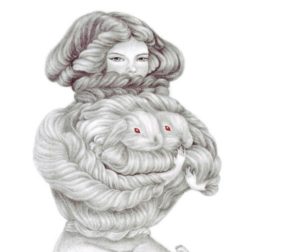 Selena Wong
Selena Wong
Like the urban environment of her place of birth in Hong Kong, Selena’s work reflects the petite surroundings, the places tucked away, forgotten, and removed from reality. Interested in superstition, folklore and the fantastical, Selena’s meticulously detailed translations of her daydreams and nightmares are both playful and disturbing. She currently works and lives in Toronto with her Netherland dwarf rabbit.
Like the urban environment of her place of birth in Hong Kong,
BORN
1986, Hong Kong, China
EDUCATION
Ontario College of Art & Design Honours BDes (2009)
Rhode Island School of Design Mobility & Exchange (2007)
SELECT EXHIBITION
2023
June 14 – July 14 – Gallery House Stable Guest Artist | Summer Show featuring Ray Caesar, John Kissick, Grace Eunshin Kim, Debra Tate Sears, Jeffrey Chong Wang, Selena Wong & Guest Artist Rachel Speirs
2022
November 23 – December 16, 2022 “Subharmonic” New Works featuring Ray Caesar, George Jae Hyun Chu John Kissick, Grace Eunshin Kim, Debra Tate Sears, Jeffrey Chong Wang, Selena Wong
2020
Gallery House – Toronto, Canada (group)
2017
PULP – Works on Paper – Gallery House – Toronto, Canada (group)
YES! Summer – Gallery House – Toronto, Canada (group)
2015
Freaks & Americana – An Exploration of Big Top Culture, Corey Helford Gallery – LA, USA (group)
Selena Wong & Myron Zabol, Gallery House – Toronto, Canada (solo)
2014
If Walls Could Talk, Gladstone Hotel – Toronto, Canada
Giants Amongst Us, CIRCA Gallery, Culver City, LA US (group)
Evergrande Exhibition, Gallery House – Toronto Canada
2012
Luminato Arts Festival, Toronto, Canada
Scarygirl, Toytokyo/Underground Gallery, NYC, USA
Wieden + Kennedy, Portland, USA
Black Math, Stream Whistle Brewing, Toronto, Canada
Unworldly Reunion, DanZon Art & Dance Centre, Toronto, Canada
2011
Power in Numbers, Gallery Nucleus, Toronto, Canada
Steam Whistle Brewing, Toronto, Canada
Toronto Hearts Japan, Gladstone Hotel, Toronto, Canada
2010
The Unicorn, Narwhal Art Projects, Toronto, Canada
A Wing Ding Zine Fair, Xpace, Toronto, Canada
Memory of Enemies, Steam Whistle Brewing, Toronto, Canada
The Dazzle, Narwhal Art Projects, Toronto, Canada
2009
Little Crowns, Narwhal Art Projects, Toronto, Canada
Curvy Show Launch, Magic Pony, Toronto, Canada
The Art of S.O.S., Project 165, Toronto, Canada
Life Drawing, Narwhal Art Projects, Toronto, Canada
Untapped Emerging Artist Exhibition, Toronto, Canada
2008
Gifted, Show & Tell Gallery, Toronto, Canada
Luminato Arts Festival, Toronto, Canada
AWARDS
2014
NMA, Gold
2012
NMA, Gold
AI 31, Chosen
CQ 29, Fine Arts
2011
Lürzer’s Archive 200
2009
NMA, Honourable Mention
3×3, no.6 | Institutional
AI 28, Chosen
Debra Tate Sears
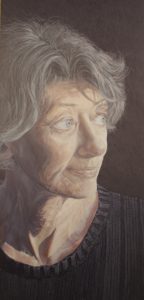 Sears’ works, like watercolour, are fast drying and are unlike any other medium in that egg tempera is composed of eggs and pigments which is one of the oldest forms of painting. This requires an artist to mix and create their paint using fine artist’s pigments ground with water into a paste to which an egg yolk and water is added. It is often overlooked by contemporary painters because of the complicated application of paint and the amount of preparation involved. In the words of Debra Tate Sears:
Sears’ works, like watercolour, are fast drying and are unlike any other medium in that egg tempera is composed of eggs and pigments which is one of the oldest forms of painting. This requires an artist to mix and create their paint using fine artist’s pigments ground with water into a paste to which an egg yolk and water is added. It is often overlooked by contemporary painters because of the complicated application of paint and the amount of preparation involved. In the words of Debra Tate Sears:
⠀
This is exactly why I was attracted to the medium. It is a return to something that is very fundamental, and very satisfying – an organic relationship between artist and raw materials that hasn’t altered significantly in a millennium.
⠀
The paint created is translucent, and is applied in thin repetitious layers of cool and warm, and transparent and opaque. Glazing and scumbling are used to reveal layers of the underlying colour, hence the luminous quality of the painted surface. The support for the painting must be rigid, and traditionally, wood panels have been used. A “true gesso” made with marble dust and/or chalk, water and animal glue serves as the ground to paint on.
Debra Tate- Sears
BORN
June 1957, Kingston, Canada
EDUCATION & EXPERIENCE
l976- l979 Art History – Carleton University
EXHIBITIONS
2023
June 14 – July 14 – Gallery House Stable Guest Artist | Summer Show featuring Ray Caesar, John Kissick, Sept 9 – Oct 7 The Power of Dreams Grace Eunshin Kim, Debra Tate Sears, Jeffrey Chong Wang, Selena Wong & Guest Artist Rachel Speirs
2022
August 27- September 24, 2022 “Some Things Last a Long Time” (Solo)
November 23 – December 16, 2022 “Subharmonic” New Works featuring Ray Caesar, George Jae Hyun Chu John Kissick, Grace Eunshin Kim, Debra Tate Sears, Jeffrey Chong Wang, Selena Wong
2021
“Memoirs of a Trespasser” Gallery House 2021 (Solo)
2020 & Prior
Chamber Gallery, Almonte 2012, 2018
Campbell House Museum, Toronto 2010
Townsend Gallery, Warkworth November 2008
Kingston Frameworks 2008 – 2019
The Lindsay Public Gallery 2004
Corby Public Gallery, Belleville l982, l998
Libby’s of Toronto Art Gallery l988, l990, l994
Farthing Fine Art, Peterborough l996
Noonday Art Centre, Belleville l99l – l997
Gallery Artist:
Robert Macklin Gallery, Kingston
Gallerie Sur Greene, Westmount PQ
Farthing Fine Art, Peterborough
Westmount Gallery, Toronto
SELECTED EXHIBITIONS
Toronto Outdoor Art Exhibition 2006 – 2019
Riverdale Artwalk 2017 – 2018
New Art Festival Ottawa 2013 – 2019
Ottawa Art Expo 2012 – 2014
Toronto Art Expo 2006 – 2009
National Capital Fine Art Festival – Ottawa – 1999-2007
McMichael Canadian Collection Autumn Show & Sale 2007, 2018,19
Rideau Valley Art Festival l983 – 2013
Buckhorn Art Festival l983 – 2012
Art for Heritage (Kingston) – 2000 – 2014
PROFESSIONAL CREDITS
Loyalist College Arts Program Instructor: Summer Arts Program l995-2006
Various Ontario Artists’ Associations Workshop Instructor
The Lindsay Gallery Art Program Instructor: 2004 – 2007
Coordinator: “For the Art in Everyone” – Integrating Current Exhibitions with Art Appreciation Seminars and Corresponding Workshops for Elementary and Secondary School Students at The Lindsay Gallery. September 2005 – June 2006 (OAC Art Education Grant)
CURATORIAL PROJECTS
The Lindsay Gallery 2004 – 2006
Initiated and Co-ordinated:
- “Sketches by Anne Langton: Fenelon Falls, Bobcaygeon and Peterborough 1837 – 1852” July 2004
- “Collectors’ Choice”: Painters 11 and Group of Seven from regional private collections 2004
- “Highways and Byways: Toronto and Southern Ontario 1950 – 1964. Watercolours by Maurice E. Roberts (1888 – 1964). June 2005
- “Of Earth and Sky”: Two Wars, Two Interpretations of Canadians in Conflict: H. Wreford Clarke and Robert Curry. To Commemorate “The Year of the Veteran” August 2005

